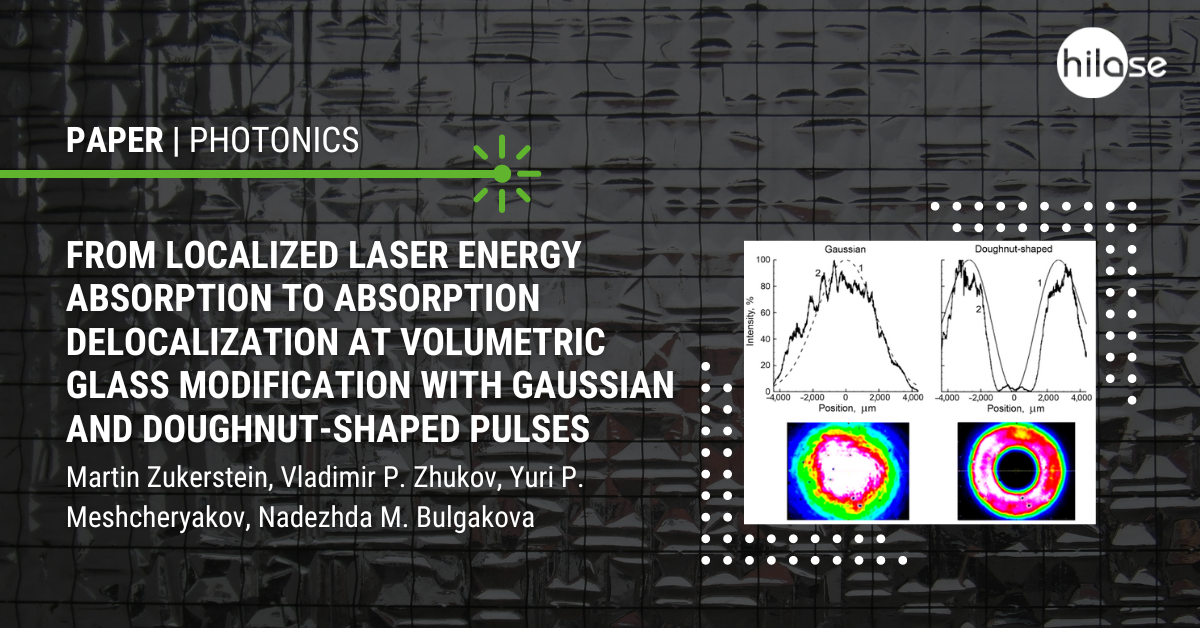HiLASIANS Martin Zukerstein (post-doc: Laser material processing), Vladimir P. Zhukov (senior researcher: Laser matter interaction) and Nadezhda Bulgakova (head of Scientific Laser Applications) have collaborated on a new paper published in the Photonics journal.

The study titled From Localized Laser Energy Absorption to Absorption Delocalization at Volumetric Glass Modification with Gaussian and Doughnut-Shaped Pulses was conducted in collaboration with Yuri P. Meshcheryakov from the Russian Lavrentyev Institute of Hydrodynamics.
Volumetric modification of transparent materials by femtosecond laser pulses is successfully used in a wide range of practical applications. The level of modification is determined by the locally absorbed energy density, which depends on numerous factors. In this work, it is shown experimentally and theoretically that, in a certain range of laser pulse energies, the peak of absorption of laser radiation for doughnut-shaped (DS) pulses is several times higher than for Gaussian ones. This fact makes the DS pulses very attractive for material modification and direct laser writing applications. Details of the interactions of laser pulses of Gaussian and doughnut shapes with fused silica obtained by numerical simulations are presented for different pulse energies and compared with the experimentally obtained data. The effect of absorbed energy delocalization with increasing laser pulse energy is demonstrated for both beam shapes, while at relatively low pulse energies, the DS beam geometry provides stronger local absorption compared to the Gaussian geometry. The implications of a DS pulse action for post-irradiation material evolution are discussed based on thermoelastoplastic modeling.








